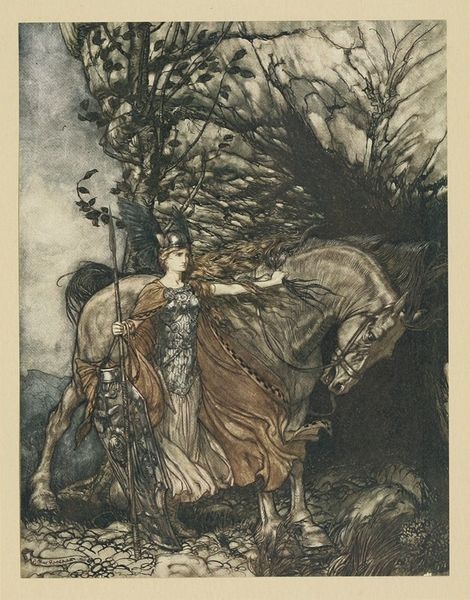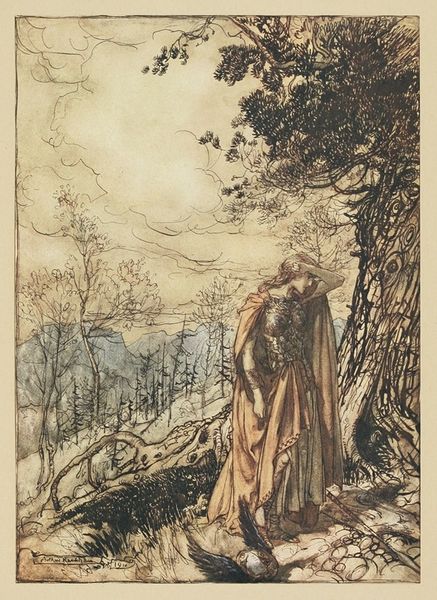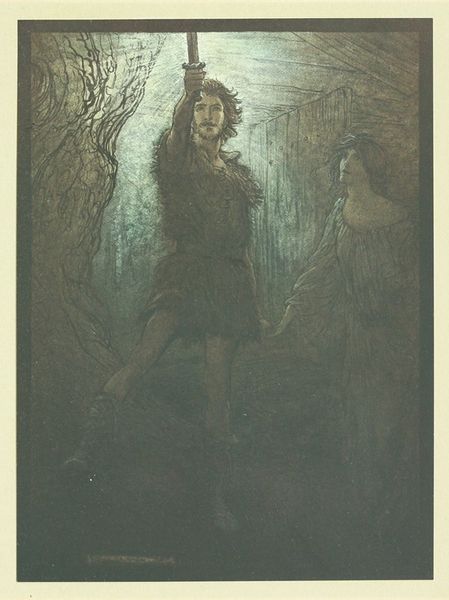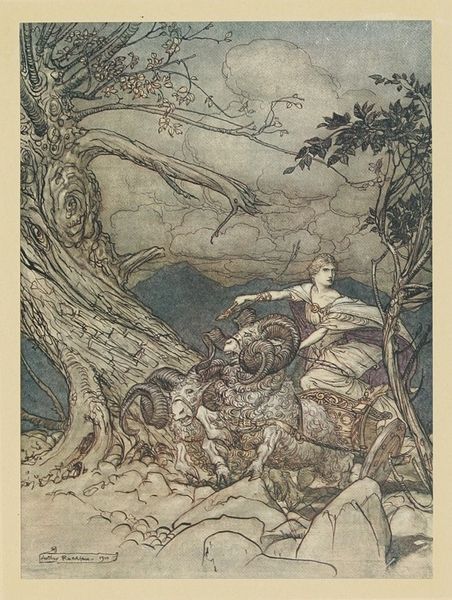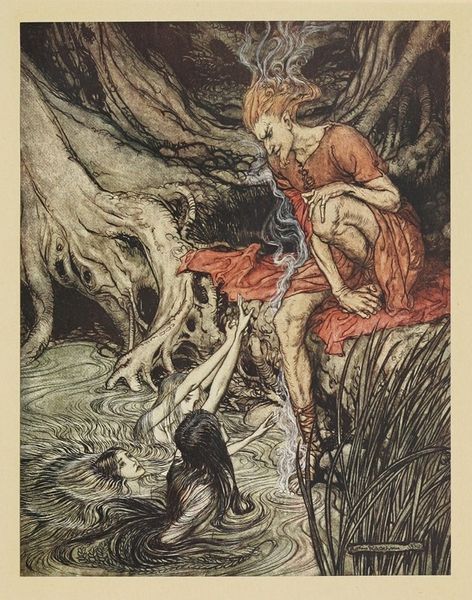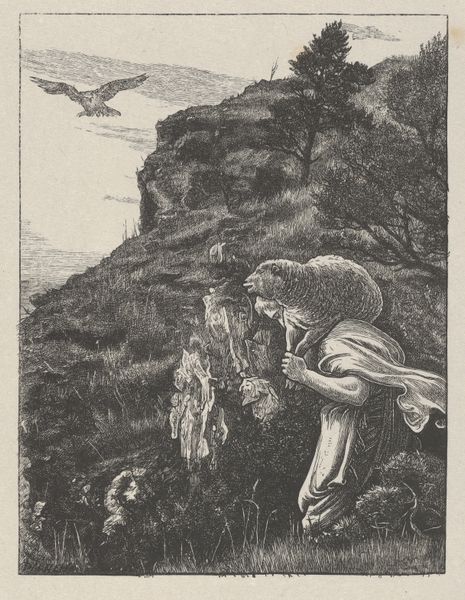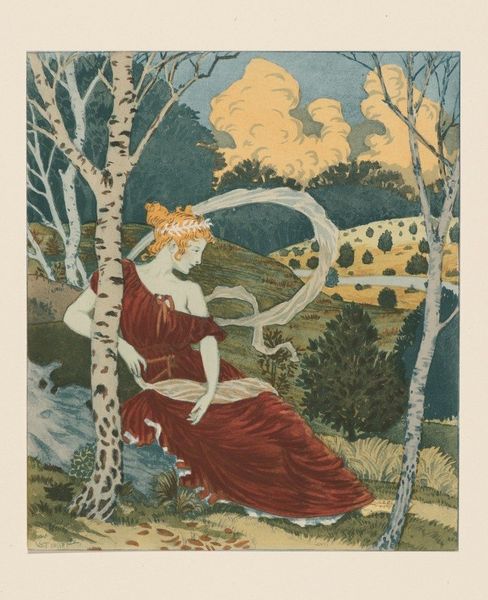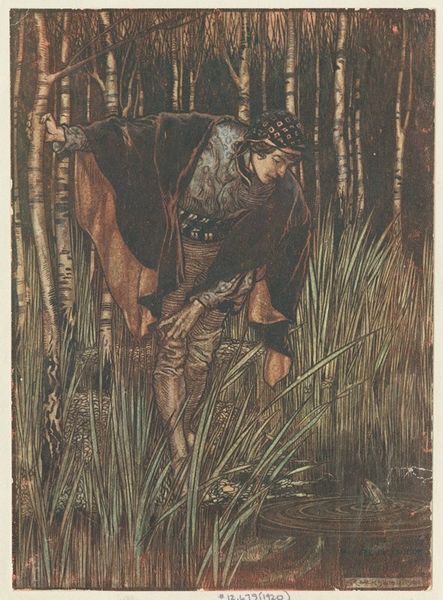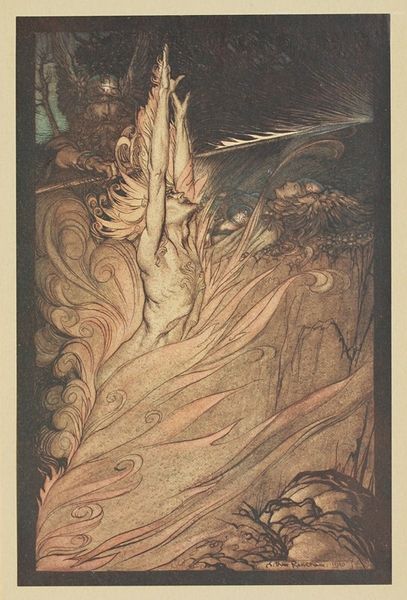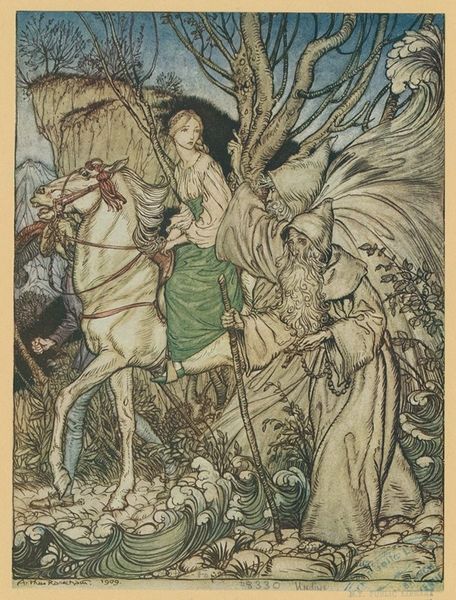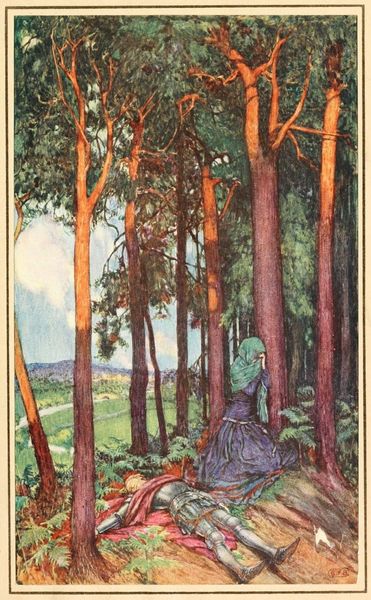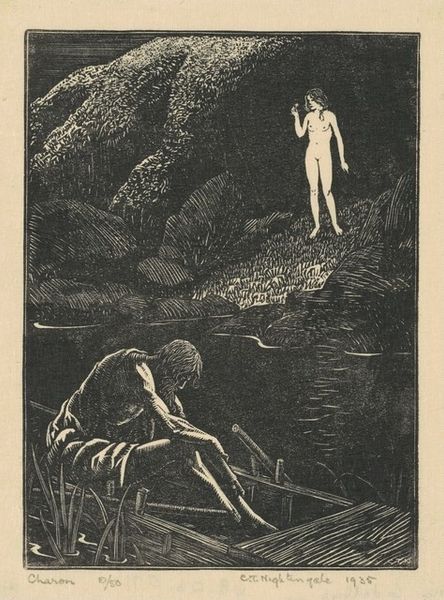
Copyright: Public Domain: Artvee
Curator: What a captivating drawing, all delicate lines and brooding atmosphere. Editor: Right? It feels like a whispered secret. There's a definite sense of melancholy about it. Is she going to a funeral? Curator: It's Arthur Rackham's “Brunnhilde slowly and silently leads her horse down the path to the cave”, made around 1910. It's an ink and watercolor illustration for Wagner's Ring Cycle, and embodies a pivotal moment from Norse mythology. Editor: Mythology makes sense – the vibe is spot on. The horse is particularly beautiful, powerful, but with this drooping head. The trees kind of claw in, closing off the composition around the figures. It's not a happy walk. Curator: No, indeed. Rackham frequently explored themes of fate and resignation in his illustrations, particularly within the context of mythological narratives. This piece exemplifies the romantic fascination with the medieval period. The composition echoes a long lineage of dramatic, illustrative depictions. Editor: It's so different from some of the louder, heroic takes you see with Wagner. This has this really strange tenderness to it, despite everything being clearly doom-laden. And I love the little glimmers of color—this orange cloak, those wisps of green on the horizon—amidst all the grayscale. Is that deliberate? Curator: It certainly focuses the attention. Rackham had a masterful way with color, using it strategically to enhance the emotional impact and narrative clarity of his pieces. Also note how his style, deeply rooted in symbolism and art nouveau, provided a visual language ideally suited for interpreting Wagner's world. It allowed him to explore the deeper psychological themes. Editor: So, this is more than just an illustration, it’s a study in quiet emotional complexity. You see this iconic warrior woman, and she’s weary, almost vulnerable. Curator: Absolutely. This drawing engages with a dialogue around heroic representation. Rackham challenges notions of invincibility, presenting the more internal realities of mythological characters, made all the more fascinating given how ubiquitous those heroic narratives are in nationalistic rhetoric in Europe at the time. Editor: Well, now I just feel sad for everyone involved. Makes you want to rewrite the story and give her a happier ending. Curator: Indeed. A beautiful intersection of myth, artistry, and melancholic emotion.
Comments
No comments
Be the first to comment and join the conversation on the ultimate creative platform.
